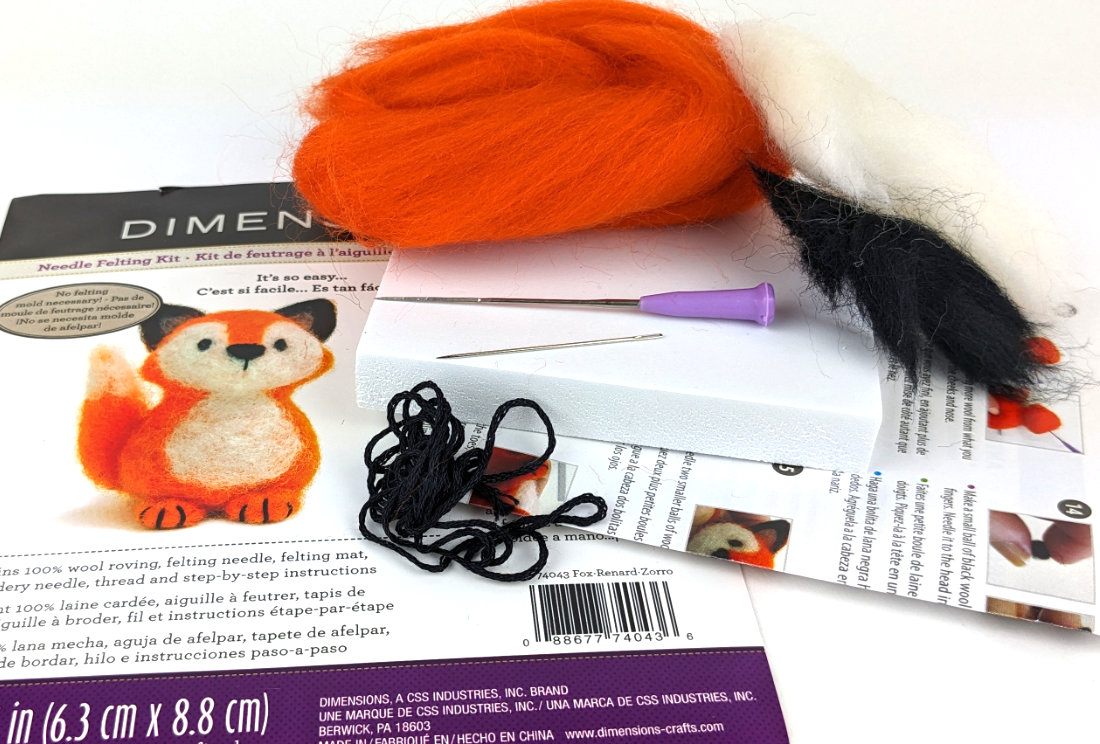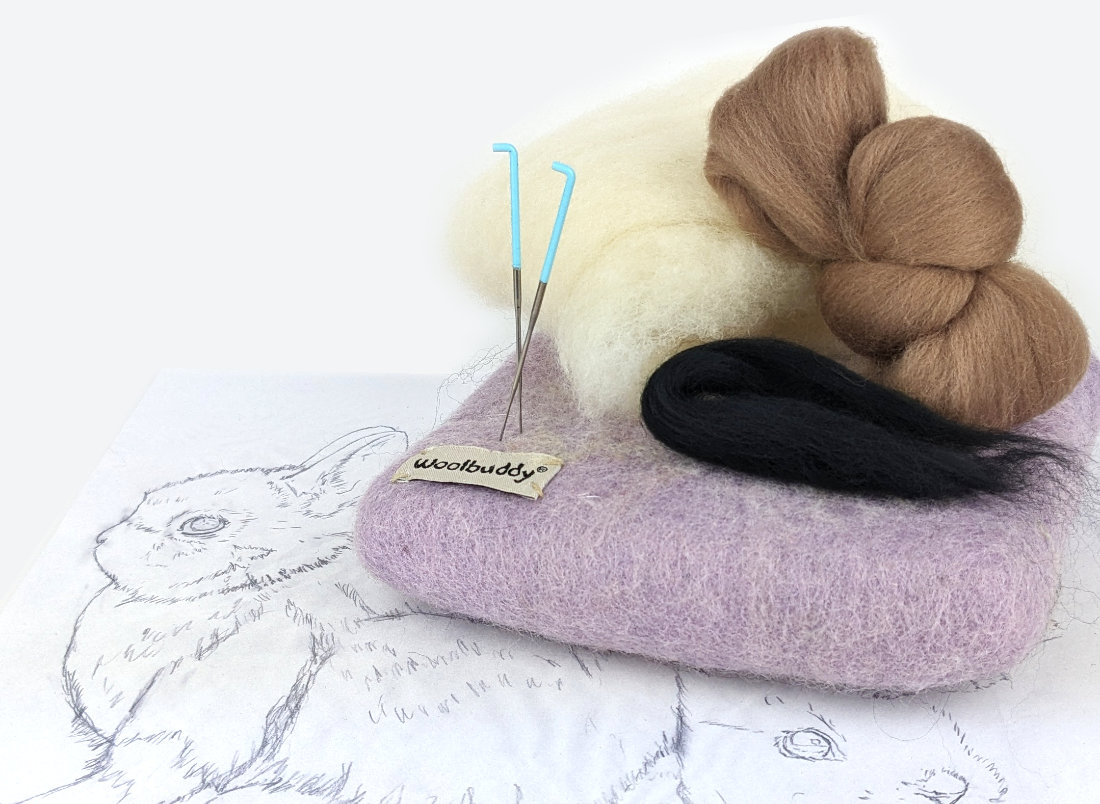Needle felting is a simple process. You poke or stab wool with a notched needle. And then you do it again and again. While the tools and supplies you need to start needle felting are readily available, you might not have them in your current craft stash.

To get started, you’ll need a felting needle, a felting mat, wool (or another fiber that felts), and something you’d like to make. You can purchase these separately or buy a kit. I started with the Dimensions Fox Kit (shown above) because it is cute, inexpensive, and includes everything you need to make it. If you’re interested in purchasing a kit, look for one that involves making something that appeals to you. There are beginner kits to make animals, birds, insects, gnomes, video game characters, pumpkins, mushrooms, ornaments, keychains, and more.
A needle, a mat, wool, and an idea
If you want to buy the items separately, the first thing you need is a needle felting needle. While there are a lot of different felting needles available, I recommend starting with a small pack of 38 gauge star needles (you want more than one needle in case it breaks). A 38 gauge triangle is another good choice. These are considered medium needles used for general felting. I’ve created entire animals using a 38 star!
Now that you have a needle, you need a felting mat to receive it. If you try to work without a mat, you’ll damage the surface you’re working on. Imagine what your table would look like if you repeatedly stabbed the top with a large, sharp sewing needle. That’s exactly what you’d be doing if you needle felt without a felting mat.
You can purchase or make one. I prefer a Woolbuddy felting mat. A lot of felters use fabric or felt mats filled with dry rice or buckwheat husks. You can also make a felting mat by sewing a drawstring bag out of burlap or canvas and filling it with dry rice.
For wool paintings or 2 dimensional felting, choose a mat with a consistently flat surface. A dense foam pad or a firm wool pressing mat is a better choice than the options I mentioned above.
After you decide on a mat, you’ll want to select the wool or another fiber that felts. Different fibers will give you different results. There are so many options that it can be overwhelming. I’m going to focus on wool as it is readily available and the fiber most needle felters start with. What you need will depend on what you want to make. Let’s figure that out first.

If you have a project in mind, that’s wonderful! You can draw a sketch or find reference photos to work from. The image above includes sketches I made when designing my Dryer Ball Bunny.
It’s helpful to think about a project from different angles. Consider how the front, side, back, top and bottom will look. I also recommend looking for a beginner level, needle felting tutorial that aligns with your idea. It’s ok if you don’t want to make your piece exactly the same as the tutorial. Use it as a framework to learn the process.
If you don’t have a project in mind, do a search on “beginner needle felting tutorial”. There are lots available for free or a small fee. Some are downloadable PDFs and some are video tutorials. Pick something simple that you’d like to make. If you need help deciding, check out my How to choose a needle felting tutorial post. A small project will help you determine whether you enjoy felting before you make a large investment in wool.
Once you’ve chosen your make, figure out how many colors or types of wool you’ll need. The tutorial should include a list and approximately how much you’ll need of each color. If possible, pick up some core wool or add a little extra wool to your order to practice with. You might be wondering whether to purchase a kit. I find them to be useful but before you buy one, read my Are needle felting kits or supply packs worth the money? post. It will help you decide if the kit you are looking at is a good value.
Patience helps
Once you have your tools and supplies, give yourself some grace as you try needle felting. Don’t rush. Get comfortable by felting a few shapes with small amounts of wool. Try making a sphere, a cylinder, or an egg shape. Spend a little time getting used to the feel of felting. I like to listen to an audiobook or music so my eyes are on my work, not a TV or tablet. Felting should be relaxing, not a race. When you feel ready, start your project!
——————–
I have included Amazon affiliate links for some of the items above. This means I may earn a small commission (at no extra cost to you) if you click through and make a purchase. Thank you in advance if you decide to support my work using these links. Doing so helps me continue to create content for you!

